|
Sustainable Santa Clara - June 2022 |
|
Owning Water Conservation Lifestyles
As California residents, we are feeling the fatigue of hearing about the persisting drought conditions. With most of the state in severe or extreme drought, it can be overwhelming to figure out what any one of us can do to make an impact. As your water service providers, we ask that you don’t give up hope and know that we are here to help you conserve with rebates, resources and tips for indoor and outdoor water savings.
Responding to drought conditions and regulations with temporary conservation measures wears us all down and is not a long-term solution. Water is our most valuable resource, second only to air. Let’s make the mindset shift together and create permanent water use choices that allow us to live water conservation rather than worry about water conservation. And with about half of residential water being used outdoors, the warm summer months are a great time to start preparing your low water landscape plans. Let your landscape do the conservation work for you! Check out our landscape rebates and outdoor water conserving tips.
|
|
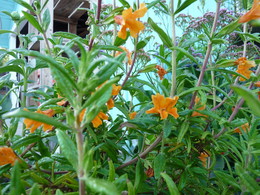 Recently, our City moved to restrict watering to a maximum of two days per week to meet the drought emergency. While this might seem like very little, the right landscape may need even less than that once established.
What types of plants barely sip water once established, stay green year-round, attract pollinators, provide local native habitat biodiversity, protect our watershed and promote sustainable landscaping? There are so many, but the main answer is... native plants!
Whether you’re an avid sustainable gardener or just curious about how to transition away from that thirsty yard, native plants and trees are an easy and beautiful way to start changing out your non-native high water landscapes.
Saving water with low water landscapes also conserves enough to focus on keeping trees healthy through the drought season by deep watering every few weeks. Trees provide critical cooling, air cleaning and climate benefits. This summer, skip the lawn and save the water for the trees.
|
 “How safe is our water?” “Do I need a faucet filter?”
Luckily, these aren't questions that need to keep you up at night. Not only does our tap water meet and exceed rigorous federal and state testing and quality standards, but you can check out all the water quality details for yourself later this month with the doorstep arrival of your summer issue of Inside Santa Clara.
Look for the City’s annual Water Quality Consumer Confidence Report, a multi-page pull-out section of Inside Santa Clara. In it, you’ll find a breakdown of water sources by neighborhood, water quality monitoring specifics, drinking water standards explained, answers to frequently asked questions and a detailed water quality table that lets you get up close and personal with what exactly comprises our drinking water.
With water at the forefront of our drought-stricken state, learn just what goes into the precious resource you’ve come to expect from your tap and reflect on the importance of maximizing every drop.
|
|
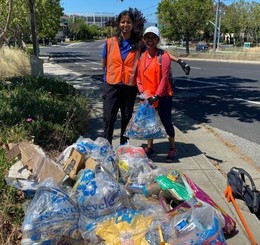 Volunteers nationwide spent hours on Saturday, May 21 participating in National River Cleanup Day to help pick up litter that can make it’s way into stormdrains and waterbodies polluting our creeks and waterways and harming wildlife. In Santa Clara, 23 local volunteers picked up litter and debris in Saratoga Creek at Bowe Ave. and El Camino Real and Guadalupe River near Lick Mill Blvd and Tasman. As a result, approximately 560 pounds of trash was collected and kept out of our waterbodies! Litter such as cigarette butts, plastic water bottles, food wrappers, and newspaper were picked up in and around the creek beds. Larger items such as a shopping cart, bed frame, tent and other hazardous waste were collected. Thank you to all our volunteers for helping protect our creeks and for keeping Santa Clara beautiful!
Missed National River Cleanup Day? Individuals, groups and organizations are invited to help #keepSCclean! Get involved in keeping public spaces clean and beautiful through Santa Clara’s Adopt-a-Spot tool lending program.
|
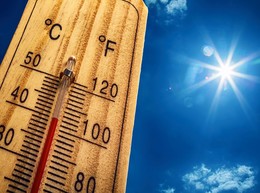 Statewide power shortages become a possibility when we experience days with widespread unseasonably hot weather.
Although the City of Santa Clara and Silicon Valley Power have sufficient power supply for its customers, we participate in Statewide energy shortages, assisting whenever needed.
Energy shortages are declared by CAISO (California Independent System Operator), the nonprofit agency that manages the state electric transmission system. CAISO balances the supply of electricity from generators inside and outside the State, with the demand for electricity from users.
Shortages occur when there is not enough power available to support the needs of residents and businesses throughout California. These steps can include day-ahead Warnings, Alerts, or Stages of Emergency.
We all have a role to play as we adapt to our changing climate. When shortages occur, we ask all customers to help reduce electric demand by doing things like reducing lighting in less used spaces and turning off not-critical electrical equipment.
|
|
 Learn how to make easy and delicious dishes for friends and family while experiencing the environmental and culinary benefits of induction cooking!
Know someone looking for an induction cooking class hosted in Vietnamese? There is still time to register for the June 25 session below and learn to make a delicious veggie or chicken curry!
Want to experience the world famous street food making Taiwan a foodie heaven? The class menu includes tribute ball soup, popcorn chicken, braised pork rice, seasonal vegetable and boba tea.
To help reduce greenhouse gas emissions and support energy efficient technologies, Silicon Valley Power (SVP) and the Santa Clara Unified School District’s Adult Education collaborated to establish an induction cooking classroom that hosts a twelve-class induction cooking series. Induction cooktops are faster and more efficient than cooking with gas or traditional electric stoves. And they're safer because they don't emit gas that contributes to poor indoor air quality, there is no exposed flame and they only heat the cookware, not the surrounding area. Register now to test induction out!
Silicon Valley Power customers can get $50 off the cost of the class by using discount code “Induction” at registration. Residents may only register for one class in the twelve-class series so others have an opportunity to test induction cooktops. Call (408)423-3500 or register online.
|
 Are you ready to water your garden less and get more back in return? Then California natives are the plants for you.
Our Parks & Recreation Department invites you to a special workshop with landscape expert and City Water Conservation Specialist, Viktoria Gleason.
Learn how you can easily make a beautiful California native habitat garden a reality while conserving water during our extreme drought conditions.
Topics covered will include the water conservation and pollinator benefits of native plants, how to get them and how to apply for the Landscape conversion rebate.
Join us for a tour of the natives planted around the park and a demonstration on how to plant, prune and maintain CA natives. Let us help you start preparing now so you are ready to plant in fall.
The workshop will be held at Everett N. “Eddie” Souza Park, June 11 from 9:30 a.m. – 11:00 a.m.
For more information email or call:
CommunityGarden@SantaClaraCA.gov 408-615-3140.
Or register online below!
|
|
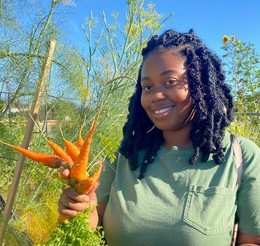 “I don’t want to share my garden secrets”, said no gardener ever! In fact, many experienced gardeners would agree the best thing about gardening is sharing our harvests, our seedlings and our knowledge with each other.
Every second Sunday at 10am, the "Eddie" Souza Community Garden opens its gates to all novice and experienced gardeners everywhere in a cultural garden exchange.
Each month we will highlight a topic to discuss. However all topics (and plants) are on the table! We invite you to bring seeds, seedlings, recipes, garden food, plant cuttings, or even questions to exchange with your neighbors. No one will be turned away for coming empty handed.
June 12 Garden Share
July 10 Garden Share
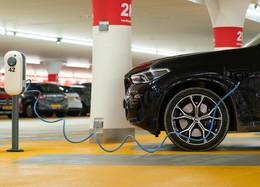 Do you or someone you know have a local business that has been thinking about adding electric vehicle (EV) charging? With the number of EV’s on the road growing, offering EV charging can be a big draw for customers.
At Silicon Valley Power (SVP) we are offering a local business workshop that will provide an overview of workplace EV charging stations for business owners, operators and property managers that are interested in offering EV charging for their employees, their customers and the public. The interactive presentation will cover:
- Types of charging stations (Level 1, Level 2, DC Fast Charging)
- EV placement in your parking lot
- Policies about using charging stations
- Collecting fees for charging station use
- Sample surveys for employees and customers
|
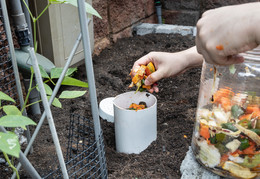 Come learn how to create your own soil to help your plants and veggies thrive this summer and beyond! Turn your food scraps into a beneficial soil amendment, known as the gardener’s “black gold”, at this free workshop.
In partnership with the University of California Cooperative Extension Compost Education Program, we are excited to host a Worm Composting Basics Workshop on Saturday, June 18 from 10 a.m. – 12 p.m., at Everett N. "Eddie" Souza Community Garden located at 2380 Monroe St.
Learn how to build, maintain and troubleshoot a worm bin that you can use for vermicomposting. It’s also a great way to recycle food scraps and create a more sustainable kitchen!
Registration is required and is limited to 12 attendees. Register at ucanr.edu/compost or by calling the “Rot Line” at 408-918-4640.
 Bicycling is an activity that has multiple benefits to the rider, the community and our planet. Choosing to bike for errands, work, or recreation keeps you healthy, improves traffic congestion and is a way of getting around that doesn’t produce the tailpipe emissions that contribute to climate change.
We are excited to support clean mobility options through improvements that encourage our community to get out on their bikes. In 2021 we installed approximately 2.5 miles of bike lanes. This summer we are scheduled to add another 3.5 miles of bike lanes throughout the city as part of several paving projects. If you are interested in bikeway projects, stay up to date on the Lafayette Protected Bikeway Project which will be hosting a community meeting this summer.
Another exciting project to help expand bicycle corridors is the paving of Stevens Creek Boulevard. This project, in partnership with the City of San Jose, will add bike lanes along the entirety of Stevens Creek Boulevard.
At the end of 2021 the City Council also approved a scooter share program which will be launched later this summer.
|
|
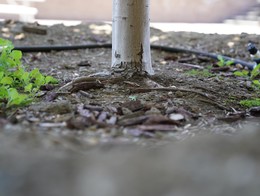 You may have heard that trees are climate superheroes, but they need the right kind of watering to mature into the carbon sequestering, urban cooling powerhouses they have the potential to be. Deep watering sends tree roots down deep into soil, making them hardier during periods of drought and helping to prevent roots from surfacing and causing damage. It’s also easier and requires less water in the long term!
Build a berm! All you need is a three-inch-high ridge of soil making a basin two to three feet wide with the tree trunk in the center to keep water where you want it.
Water! Once every two weeks, apply five gallons of water within the berm, being careful to keep the berm intact.
|
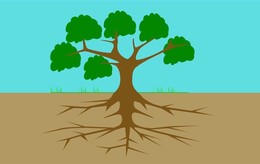 Old or established trees have deeper roots that rely less on surface water and do best with heavy and slow watering (80 to 100 gallons) three times a year during the warm season. Place a soaker hose away from the trunk within the tree’s dripline (the outermost edge of the leaf canopy.)
Check your soaker hose’s gallon-per-hour output to figure out the necessary time and quantity. A 50-foot hose that waters ½- to 1-gallon per foot per hour needs to run for about 2 hours to deliver 50 to 100 gallons.
It may sound like a lot of water, but at three times per year, the total water cost is less than $3.00, much less than replacing a hard-working tree!
|
|
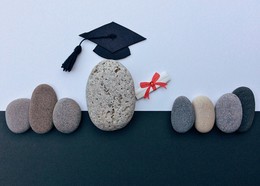 Balloons may seem like a cheerful way to celebrate a special event, but their impacts can outweigh the fun. All balloons can end up polluting. Mylar balloons are particularly harmful as they are non-recyclable metallicized plastic.
When balloons are released into the environment, intentionally or not, they can travel for miles. At best, they can end up as litter in our neighborhoods; at worst, they can end up in an aquatic ecosystem (i.e., creek, ocean, etc.), where animals can mistake balloon debris for food or become entangled in their ribbons. Let's all consider celebrating with safer, more eco-friendly alternatives like bubbles, flags, banners, streamers, and tissue paper pompoms. Let the party soar, not the balloons!
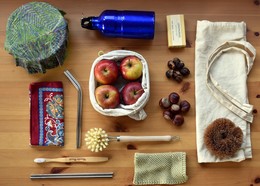 This July, declare your independence from plastic! This includes plastic bags, straws, packaging, and other plastic items meant to be used once and discarded. Here are some ways to be plastic-free:
- Bring your own bags
- Buy loose produce
- Avoid processed foods that are heavily packaged
- Avoid disposable food ware
- Bring a reusable water bottle
- Say no to straws and lids when possible
- Buy snacks in bulk and portion out in reusable containers
- Enjoy ice cream in a cone – no cup, no spoon
- Make your own environmentally friendly household cleaners
- Join this global movement by taking the Plastic Free Pledge!
|
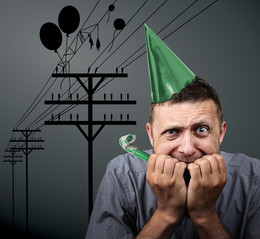 In addition to creating environmental pollution, balloons can also float away and get tangled in the overhead power lines, causing power outages.
One loose balloon can cause a power outage for thousands of customers.
If you're at a celebration with balloons, remind friends and family to cut or pop balloons before putting them in the trash to prevent them from flying away.
If you see balloons in the power lines, never try to retrieve them yourself. Instead, report them to Silicon Valley Power at 408-615-5600.
 Not only is the personal use of fireworks illegal, but they can be a concentrated contributor to pollution on our streets, waterways, and environment.
This year wow your family and friends with fun, safe, and sustainable ways to celebrate:
- Make a red, white and blue snack spread
- Host an outdoor movie night
- Have a 4th of July themed dress up day
- Enjoy a picnic or fly a kite at your local park
- Plan an outdoor family game night
- Have a backyard campout
- Host an outdoor red, white and blue DIY craft night
- Celebrate with professional firework shows across the Bay Area
|
|
Rebates and Resources to Help You Save |
|
|
Want more ways to save water in your yard? Free automatic shut-off hose nozzles and moisture meters are available for residents. Stop by the Water & Sewer Department at City Hall or order them through the online Valley Water online store today!
|
|
|
Adding a few inches of mulch around plants helps soil retain moisture so you can water less. This is particularly important as we move into summer weather when soil dries out more quickly.
|
|
|
Summer is here and it's a perfect time to consider an electric bicycle! E-bikes are great for recreational riding and they can be a fun and healthy commute alternative. Silicon Valley Power offers a rebate up to $300 off the purchase of an electric bike, with an additional $200 rebate for income-qualified customers.
|
|
|
What do you do in your daily life to be a sustainability leader?
Here are a few ideas to get started:
- Learn more about the City's 2022 Climate Action Plan Update.
-
Conserve Energy – Try to use large appliances during off-peak times.
- Get out and walk or ride your bike.
- Don't over dry your laundry - save energy and lengthen the life of clothing. And be sure to clean out the lint trap for efficiency and safety.
-
Make the water conservation mindset shift! - Visit Water Conservation for tips and resources.
|
|
|
|
|